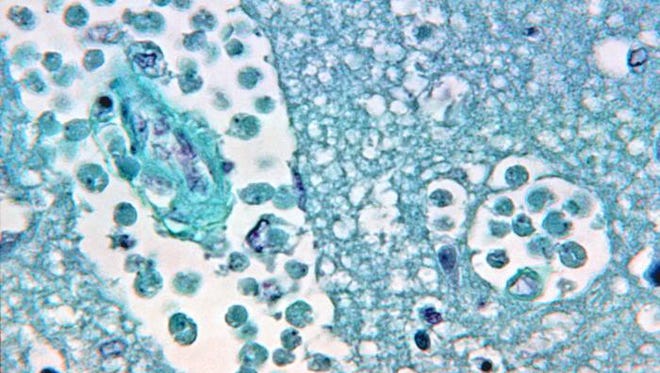Infection
Georgia resident dies from rare brain-eating amoeba, Naegleria fowleri
A Georgia resident has died of Naegleria fowleri after likely becoming infected while swimming in a freshwater lake or pond, according to the Georgia Department of Public Health.
Naegleria fowleri is commonly referred to as the “brain-eating amoeba” because it destroys brain tissue, causing brain swelling and usually death, according to the Georgia Department of Public Health.
On rare occasions, it can cause Primary Amebic Meningoencephalitis (PAM), a brain infection that is uncommon but lethal.
Prior to this case, there have been five other cases of Naegleria fowleri reported in Georgia since 1962.
The Georgia Department of Public Health did not disclose the identity of the person who died or where they may have been infected.
What is Naegleria fowleri?
According to the Centers for Disease Control and Prevention, Naegleria fowleri is a single-celled organism found in warn freshwater and soil.
Most infections have come from swimming in freshwater bodies, such as lakes, rivers or hot springs. Very rarely, infections occurred from pools or water parks with insufficient chlorine levels.
FLEA BITE:A Texas man lost his hands and feet earlier this month after a single flea bite

A majority of cases since 1962 have occurred in the South, primarily in Texas and Florida.
It enters the body when water gets in through the nose. It cannot infect people if swallowed and is not spread from person to person.
Naegleria fowleri symptoms
Early symptoms usually start about five days after infection and include a sudden onset of fever, headache, vomiting, or a stiff neck. As the disease progresses, symptoms include confusion, seizures, hallucinations, and coma.
How rare is Naegleria fowleri? How deadly is it?
The risk of infection is rare, with less than nine cases reported annually, according to the CDC.
While the risk of infection is rare, the amoeba is incredibly lethal. Among known infections since 1962, only four people have survived the amoeba, resulting in a 97% fatality rate.
For a reason yet to be identified by experts, the majority of cases are seen in males under 14 years old.
With rising temperatures due to climate change, it’s possible that Naegleria fowleri infections will become more common, said the CDC. Warmer air temperatures result in warmer waters and more favorable conditions for the amoeba to grow.
ZOMBIE VIRUS:Scientists revive ‘zombie virus’ that was frozen for nearly 50,000 years
While the risk of infection is low, swimmers should always assume there is a risk when they enter warm freshwater. Recommended precautions from the CDC include:
- Avoid jumping or diving into bodies of warm fresh water, especially during the summer.
- Hold your nose shut, use nose clips, or keep your head above water when in bodies of warm freshwater.
- Avoid putting your head underwater in hot springs and other untreated geothermal waters.
- Avoid digging in, or stirring up, the sediment in shallow, warm freshwater. The amoebae are more likely to live in sediment at the bottom of lakes, ponds and rivers.
Other Naegleria fowleri cases
A Las Vegas toddler died from the amoeba earlier this month. The toddler’s family said his health began spiraling after he began experiencing flu-like symptoms.
In March, a Florida resident died after state health officials say they likely contracted the infection as a result of rinsing their sinuses with tap water.

